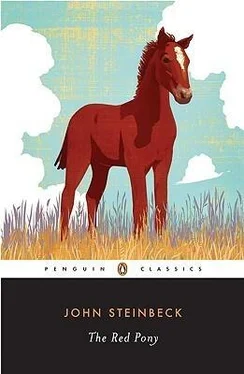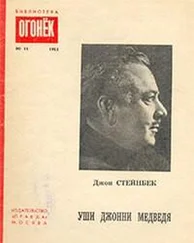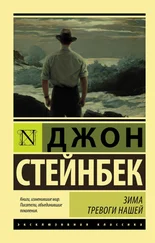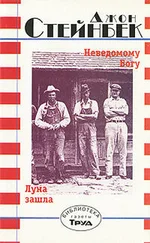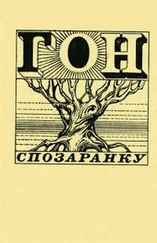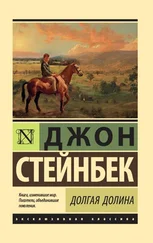Throughout much of his young adulthood, in college and afterward, the son had struggled to escape his parents’ control, living away from home as much as possible, working at jobs unacceptable to middle-class notions of suitable employment, and only returning to Salinas when financial necessity made homecoming inescapable. This kind of distancing is traditionally associated with the independence essential to creativity—most writers of Steinbeck’s generation insisted on it as a kind of authorial ritual—but in his case the need for independence from his parents had a number of paradoxical dimensions. First of all, he was forced to accept their financial assistance, as well as the house in which he and Carol lived after they were married, in Pacific Grove, within the orbit of both sets of parents. This in turn got the couple close to Monterey, which would provide Steinbeck with the material for his first commercial success, Tortilla Flat (1935), as well as the tutelage of the marine biologist Ed Ricketts, who would be so influential on Steinbeck’s emerging philosophies of life and art. Finally, the deaths of both parents, which gave him absolute freedom from their personal control, came just as he entered that phase in his career when he no longer needed the isolation from their influence. This is precisely the kind of tidy reticulation of circumstances that Steinbeck worked very hard to avoid in his fiction.
But then there are a number of discontinuities between the facts of Steinbeck’s life—or our perceptions of those facts—and the kinds of fiction he wrote. There is, for example, a kind of chronological neatness in the conjunction between the writing and publication of Steinbeck’s most successful, even greatest, works and the first two presidential terms of Franklin Delano Roosevelt. The proximity makes it easy to associate Steinbeck’s fiction with the social reformations undertaken during the successive Roosevelt administrations, an association that colors most of the appraisals of his work, yet any such linkage is fallacious howevermuch fortuitous. This is especially true of Grapes of Wrath (1939), which bears a close resemblance to the propaganda engendered by the Works Progress Administration, ennobling the suffering poor in order to loosen congressional pursestrings. At times the text seems to cry out for illustration by the photographs of Walker Evans, but the coincidence is misleading: Grapes of Wrath was not written to promote Roosevelt’s social reforms, nor was it (as it was regarded at the time) in harness with even more radical movements of the day.
Of course, like many Americans, Steinbeck felt great pity for the displaced Okies and Arkies who had followed a national myth (and misleading pamphlets distributed by agribusiness agents) to California seeking work, only to find enforced idleness, persecution, and peonage. Indeed, his feelings resulted in the need to revise entirely the manuscript that became Grapes of Wrath . The emphasis of the first version of the book was a satiric attack on the greed and vigilantism of the California farmers; the second stresses the noble sufferings of the workers, epitomized by the Joad family. But despite Steinbeck’s presenting a positive case for government-sponsored work camps, and despite the celebration of humble humanity found in the book, Grapes of Wrath is not, finally, an epic of the migrant farmhand but a tragedy centered on the breakup of a family because of bewildering changes in agricultural practices brought on by the economic forces of the Great Depression, accelerated by the manmade “natural” disaster that was the Dust Bowl. It is, moreover, a demonstration of inevitability that makes any kind of government palliative futile. And finally, by concentrating on the decline of the Joad family, Stein-beck placed himself in the company of contemporary writers who have never been associated with the social reforms of FDR.
Writers of the 1930s with such disparate backgrounds and styles as Pearl Buck, William Faulkner, and Margaret Mitchell were also concerned with family breakup, and even Erskine Caldwell (a writer who in many respects can be compared—as he is occasionally confused—with Steinbeck) used the disintegrating family as the central fact of Tobacco Road and God’s Little Acre . All of these writers, notably, were from the South, and their books can be regarded as reflecting the “matter” of the South, conceived as a process of decline and degeneration, dating from the disastrous effects of the Civil War and Reconstruction. But Steinbeck, a Californian, came from a region inevitably associated (as by the Joads) with the party of Hope and Progress—that is, with the promise held out to the rest of America by the West. It was that hopeful grail that lured Steinbeck’s grandfather to California after the Civil War, and which his father continued to pursue during young John’s boyhood. Steinbeck regarded that quest as Quixotic and thought of his parents as victims of the false promise of the West, as having spent their lives in futile pursuit of a prosperity that was forever withheld. This is yet another facet of that complex paradox that characterized the writing of the Red Pony stories, for Steinbeck’s success which followed (not as a direct result of their publication, I should add) disrupted his certainty that his own creative life would be one of constant disappointment.
Steinbeck was not the first writer in California to regard the promise of the West as something of a delusion. Most of the Easterners-come-west who produced the first “California” literature—most notably Bret Harte, Mark Twain, and Ambrose Bierce—recorded less than hopeful parables, derived from the boom-and-bust cycles of gold-mining life. Closer to Steinbeck in time and subject matter was Chicago-born but California-raised Frank Norris, who in The Octopus (1901) framed an epic-sized tragedy in which the dreams of wealth from raising wheat nurtured by false expectations on the part of San Joaquin farmers are blown away by the harsh realities of price manipulation by the railroad. If California was “the future,” then to reverse the famous aphorism, it didn’t seem to work—except for corporate capitalism.
Again, little in Steinbeck’s personal experience would have suggested otherwise: Though born in relatively comfortable middle-class circumstances, the boy’s life was overshadowed by the restless dissatisfaction of a father who never, in his own estimation, seems to have succeeded. Though enjoying the steady income derived from his position as treasurer of Monterey County, the senior John Steinbeck had earlier lost his bid for much greater prosperity when the feed and grain business he started was doomed from the start by the advent of the automobile. The marginal jobs young Steinbeck held as he slowly even haltingly worked his way through Stanford University could have done nothing to affirm any belief in the American dream, and though the field and factory work brought him into contact with the workers who would populate the stories that first made him a popular writer, nothing he ever wrote suggested that some political or economic solution to the inherent instability of agricultural capitalism was just around the corner.
Quite the contrary: Even as he sustained the “social realism” of his fiction by means of mythic material abstracted from his beloved tales of King Arthur, there is an abiding sense that Arthur will not return, that the past enriches the present but only in terms of literary contexts. Jackson Benson, from whose biography of Steinbeck much of the foregoing material has been taken, tells us that the boy’s mother, Olive Hamilton Steinbeck, was largely responsible for nurturing his creative drives. A schoolteacher, she filled the home with literary material, books and magazines, and read bedtime stories to her children, including tales of magic and enchantment, laying the basis for John’s enthrallment by the Arthurian legends. And yet Steinbeck’s are the kind of fairy stories in which no benevolent godmother shows up, no powerful prince on horseback saves the day. And if the Red Pony stories seem to resemble the kinds of fiction written for children, if only because the protagonist is himself a child, they are not the kinds of fiction traditionally framed for young readers, which more often than not end with a hopeful, upbeat finale.
Читать дальше
